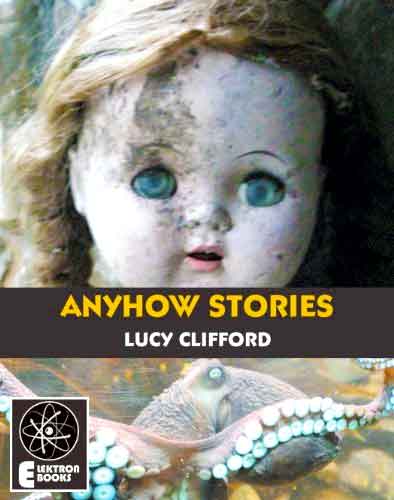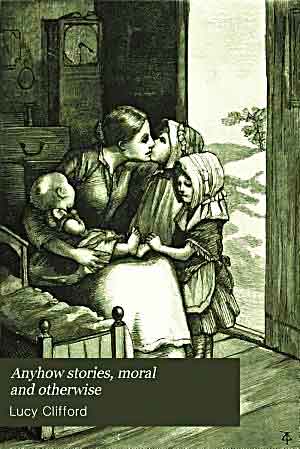 By LUCY CLIFFORD (Elektron Ebooks; 1885/2012)
By LUCY CLIFFORD (Elektron Ebooks; 1885/2012)
This remains one of the great curiosities of the Victorian era, a children’s book of considerable richness and bizarre, and not a little darkness. You’ll find few books of any sort with as strong a grasp of otherworldly apprehension as these “Anyhow Stories,” not all of which are explicitly horrific.
Of those stories herein that are horror-themed, the undoubted standout is “The New Mother,” a moral fable that’s also a poetic evocation of otherworldly, near science fiction-ish dread. If features two children who happen upon a ratty young woman on their way to school. The woman has a box, inside which, she claims, are two tiny people who dance to the tune of a specially designed instrument. The kids want to see the mini-people but the woman declines to show them, claiming they can only be seen by naughty children—hence, the kids grow determined to act as naughty as they possibly can, which as you might guess only leads to trouble.
What is ultimately surprising about “The New Mother” is what a profound depiction of loss and despair it turns out to be. That sense of loss pervades most of the remainder of the stories, especially “From Outside the World,” about a girl without a heart trying to make her way in the world, and “The Imitation Fish,” about a fake fish tossed into the sea, where it’s shunned by real fish, before being recaptured. The sad, sad ending to this story is nearly as impacting as that of “The New Mother.”
 Among the remaining stories are “The Baby’s Legs,” in which we learn why it’s not a good idea to leave a baby’s legs uncovered on a cold day, and “The Story of Willy and Fancy,” the book’s most overtly surreal account. It concerns a lonely boy befriended by a spectral girl who helps satisfy his desire to travel to the end of the world. There two mountains are situated, one light and one dark because “Of joy and sorrow, of light and darkness, is the whole world made.” Also worthy of mention is the verse poem “The Paper Ship,” with its eerie descriptions of lifeless dolls and stuffed animals (“And all of them stared at me/With large glass eyes that never had blinked/And never a one could see”).
Among the remaining stories are “The Baby’s Legs,” in which we learn why it’s not a good idea to leave a baby’s legs uncovered on a cold day, and “The Story of Willy and Fancy,” the book’s most overtly surreal account. It concerns a lonely boy befriended by a spectral girl who helps satisfy his desire to travel to the end of the world. There two mountains are situated, one light and one dark because “Of joy and sorrow, of light and darkness, is the whole world made.” Also worthy of mention is the verse poem “The Paper Ship,” with its eerie descriptions of lifeless dolls and stuffed animals (“And all of them stared at me/With large glass eyes that never had blinked/And never a one could see”).
Obviously these “children’s” stories aren’t entirely suitable for young children, or even older ones (in a preamble the author claims the book is aimed at kids “of middling size,” and also “for the big folk who are not above reading about the little folk”). The stories’ spectral beauty and sheer strangeness set them far beyond most kid lit, and for that matter most grown up fiction, yet their resonance, stretching well over a hundred years beyond the book’s initial publication, is undeniable.
